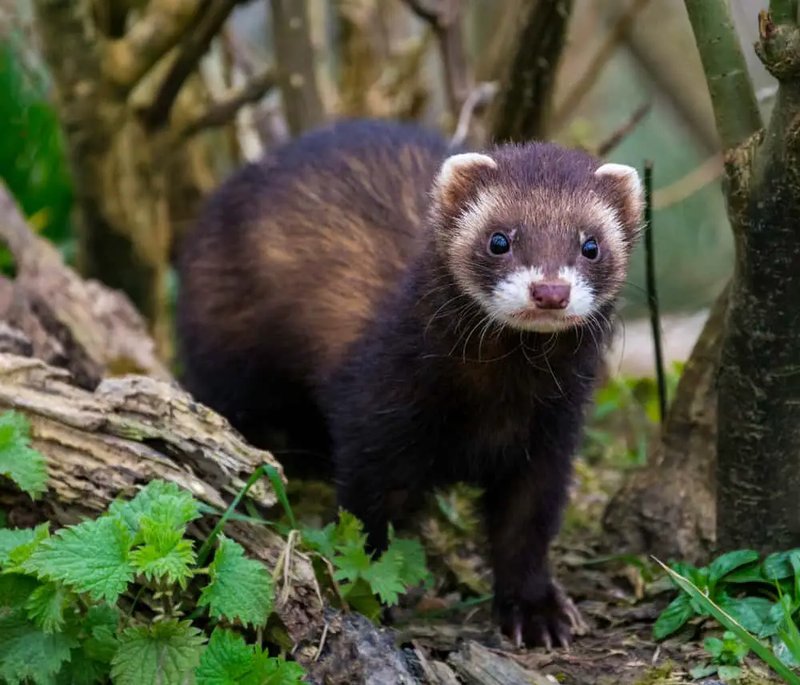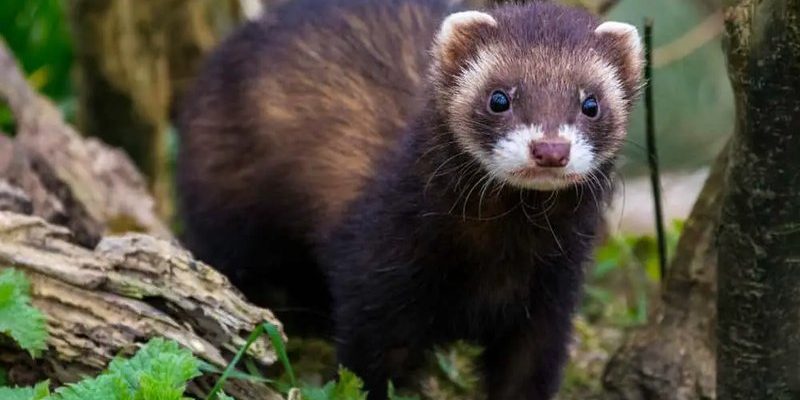
Each of these animals has its own unique traits, but they can often be confused with ferrets if you’re not paying close attention. From looks to behavior, we’ll break down what makes each one special and how you can spot the differences. So grab your coffee (or maybe some ferret snacks), and let’s dive in!
1. Weasel
The weasel is perhaps the most obvious animal on this list. They share a similar body shape with ferrets, being long and slender. Weasels are known for their agility and can be quite playful, much like our ferret friends.
You might be wondering what sets them apart. Well, weasels tend to have a shorter tail compared to ferrets, and their fur often has a slightly different color pattern. Weasels can be brown or yellowish-brown, with a lighter underside. Also, their behavior is more solitary compared to the social nature of ferrets. This means that while a ferret might readily engage in playtime, a weasel would rather explore on its own.
2. Stoat
Next up is the stoat, also known as the short-tailed weasel. These critters are often mistaken for weasels, but they’re actually a bit bigger than your typical weasel and have a more pronounced, fluffy tail. Stoats undergo a fascinating seasonal color change—they sport a rich brown coat in summer but transform to a snowy white in winter.
When comparing stoats to ferrets, pay attention to the tail. Stoats have a black tip on their tails, which sets them apart from ferrets and weasels. Plus, stoats are more robust, which gives them a somewhat sturdier appearance.
3. Mink
The mink is another relative you might confuse with ferrets. Minks are slightly larger and have thicker fur. They can come in various colors, from dark brown to black, but you’ll find that their fur feels softer and denser than that of a ferret.
Minks also have webbed feet, a feature that aids in their semi-aquatic lifestyle. So, if you spot one near a body of water, it’s likely a mink! Ferrets, on the other hand, are more suited for land play and don’t have that webbing. Their playful demeanor is similar, yet minks tend to be more elusive and are less likely to engage in your typical cuddle sessions.
4. Sable
The sable is a luxurious-looking animal with a coat that is velvety and rich. They are often mistaken for large ferrets due to their long bodies, but sables are generally darker in color, usually a deep brown.
One of the easiest ways to tell a sable apart from a ferret is by their facial structure. Sables have a more pronounced snout and larger eyes. Additionally, they have a distinctly bushy tail, which is unlike the more traditional ferret tail. While their playful nature is captivating, sables are typically more reserved than ferrets, making them less interactive companions.
5. Otter
When we think about playful animals, the otter often comes to mind. They share the elongated body structure but are generally much larger than ferrets. Otters love water and are fantastic swimmers, using their webbed feet and streamlining to their advantage.
To differentiate between otters and ferrets, the most significant factor is habitat. While ferrets are terrestrial, otters thrive in aquatic environments. Plus, otters have a much thicker, bulkier body and a flatter face, making them easy to recognize at a glance. If you see one sliding down a river bank or playing with a pebble, you can bet it’s an otter!
6. Tasmanian Devil
Yes, the Tasmanian devil might look ferret-like due to its body shape, but they’re quite different in many aspects. While both are members of the animal kingdom that can be adored for their quirky appearances, Tasmanian devils have broader faces and stockier builds.
Their black fur with white markings can help you spot them quickly, especially compared to the more uniform coats of ferrets. Tasmanian devils are also known for their loud, screeching calls, which is something ferrets don’t do. If you hear a ruckus, you might be closer to a Tasmanian devil than a ferret!
7. Honey Badger
The honey badger is one fierce little critter! Though they have a different build, their personality can seem ferret-like—curious, bold, and always ready to dig into trouble. Honey badgers have a thick body and shorter legs, while ferrets are more agile and slender.
Their fur is generally gray with a distinctive white stripe down their back. Honey badgers are far more aggressive than ferrets, which are playful and friendly. Spotting a honey badger is likely in areas known for wildlife, where they might be foraging for food, unlike the domesticated environment of a ferret.
8. Ferret Badger
As the name suggests, the ferret badger bears a striking resemblance to ferrets. They are roughly the same size and share similar body shapes, but their fur is usually a mix of black and white.
To differentiate them, look at the facial markings; ferret badgers have more distinct facial patterns. Behaviorally, they are also quite different—ferret badgers are known to be loners, while ferrets thrive in social settings. Understanding these nuances can help you identify them easily if you ever come across one in the wild.
9. Asian Palm Civet
The Asian palm civet is another animal that resembles a ferret in body shape and size. With its elongated body and slender legs, you might do a double-take at first glance. However, civets have a more cat-like face with a longer nose and larger eyes.
Their fur is patterned, often with spots and stripes that can vary in color. This distinctive appearance is a key way to tell them apart from ferrets, which usually have solid or uniform coloring. Civets are also more nocturnal, often venturing out at night, unlike ferrets, which are known for their playful daytime antics.
10. Chipmunk
Although a chipmunk looks quite different at first, their curious and playful nature can remind you of a ferret. Chipmunks are much smaller and have a rounder body, but their antics can be quite similar.
The main giveaway is their stripes. Chipmunks have distinct stripes running down their back, unlike the solid colors of most ferrets. Their smaller size and tendency to collect food make them quite different as well. While ferrets are typically social and love to play, chipmunks are more inclined to be solitary, especially when hiding their food.
In wrapping up, these ten animals showcase a fascinating variety of shapes, colors, and behaviors that make them similar yet distinct from ferrets. Whether you’re considering a pet or just want to learn something new, understanding these differences can deepen your appreciation for the animal kingdom. Each has its charm, quirks, and stories to tell!

